Ann Vollum has been an artist for as long as she can remember. As a child, she loved to paint and make things from felt and fur.
But, although she had a yearning to study textile design, the adults in Ann’s life had different ideas.
Her teachers (at what she describes as a ‘horrendous and very snooty boarding school in England’) did not consider anything other than architecture a worthy pursuit for girls who showed an aptitude for the visual arts. And her mother was terrified that an art degree would lead to a life of poverty.
So, having been taught from an early age to tread the conventional path, Ann conformed and went to study Architecture at Newcastle University. She was ill-suited to the subject and ended up learning to be a graphic designer and art director on the job instead. Alongside this career, Ann continued to create art; painting in oil and acrylic, drawing in ink, combining the ink drawing with painted backgrounds.
Thirty years later, in order to fulfil her ambition of working on a larger scale, Ann returned to textiles. Reviving a passion that had remained latent for so long an experience Ann found ‘enriching and rewarding’: “I started making papercuts from Tyvek. I painted large pieces of tightly woven cotton with acrylic gesso, and then using an X-Acto knife, I cut designs into them to create a type of lace. I used these stencils to print images onto more cloth painted with acrylic gesso. I then added beads and needle felted accents to those pieces.”
And since taking TextileArtist.org’s online course Exploring Texture & Pattern, Ann has started incorporating hand stitch into these pieces too. “I was drawn to Sue’s work because of its painterly quality and the freedom of her stitching. I was drawn to the online course because it had just enough structure but also encouraged great individual artistic expression.”
In this interview, Ann shares with us how her work has developed since the inclusion of textile elements, how she approaches stitching as ‘drawing with thread’ and how she is constantly working to define her own personal style.
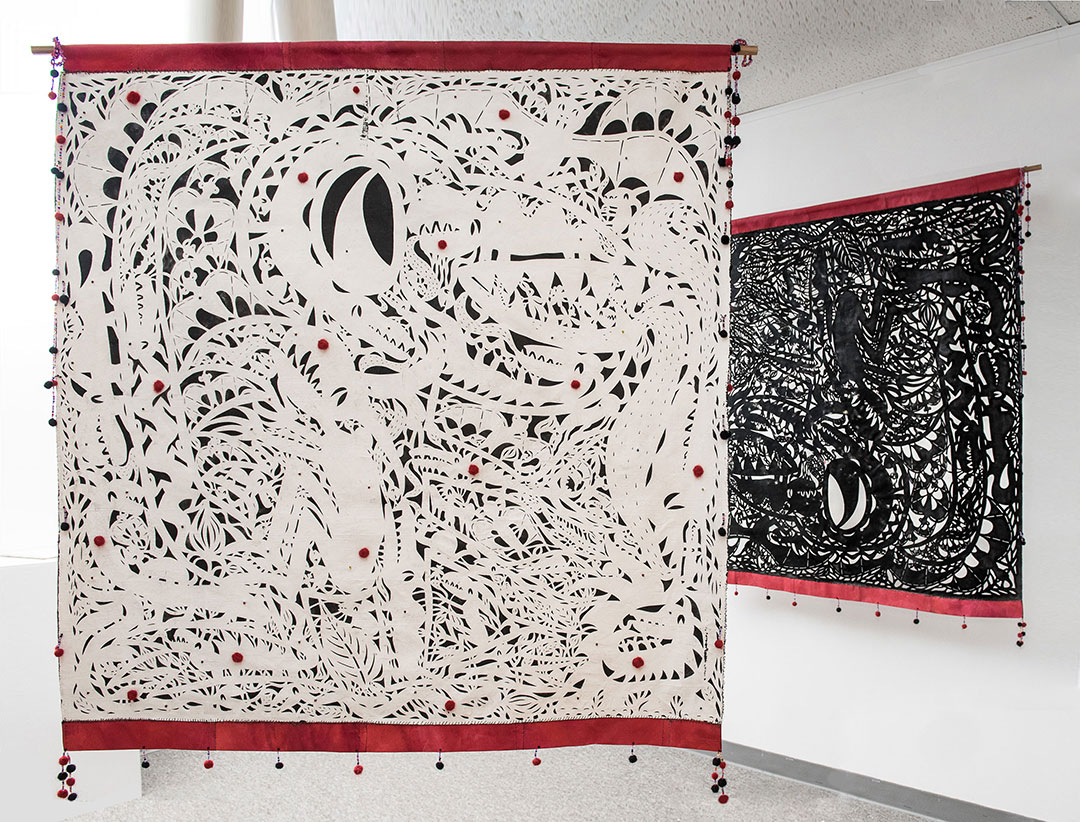
A childhood spent making things
TextileArtist.og: Tell us a bit about your history with art and hand stitch.
Ann Vollum: As a child, I lived in Zambia, which was not at all a consumer society. Access to toys was limited and we had no TV, so my childhood was spent creating things.
I was a painter, but I remember having stitch patterns, felt and fur fabric to make stuffed animals, a few of which have surprisingly survived the many travels of my parents and myself and now reside with me in New Jersey, USA. My favourite is a rather peculiar rabbit that I made from my parent’s old bedspread. He is in a shadow box in our hallway and used to scare my daughter’s friends!
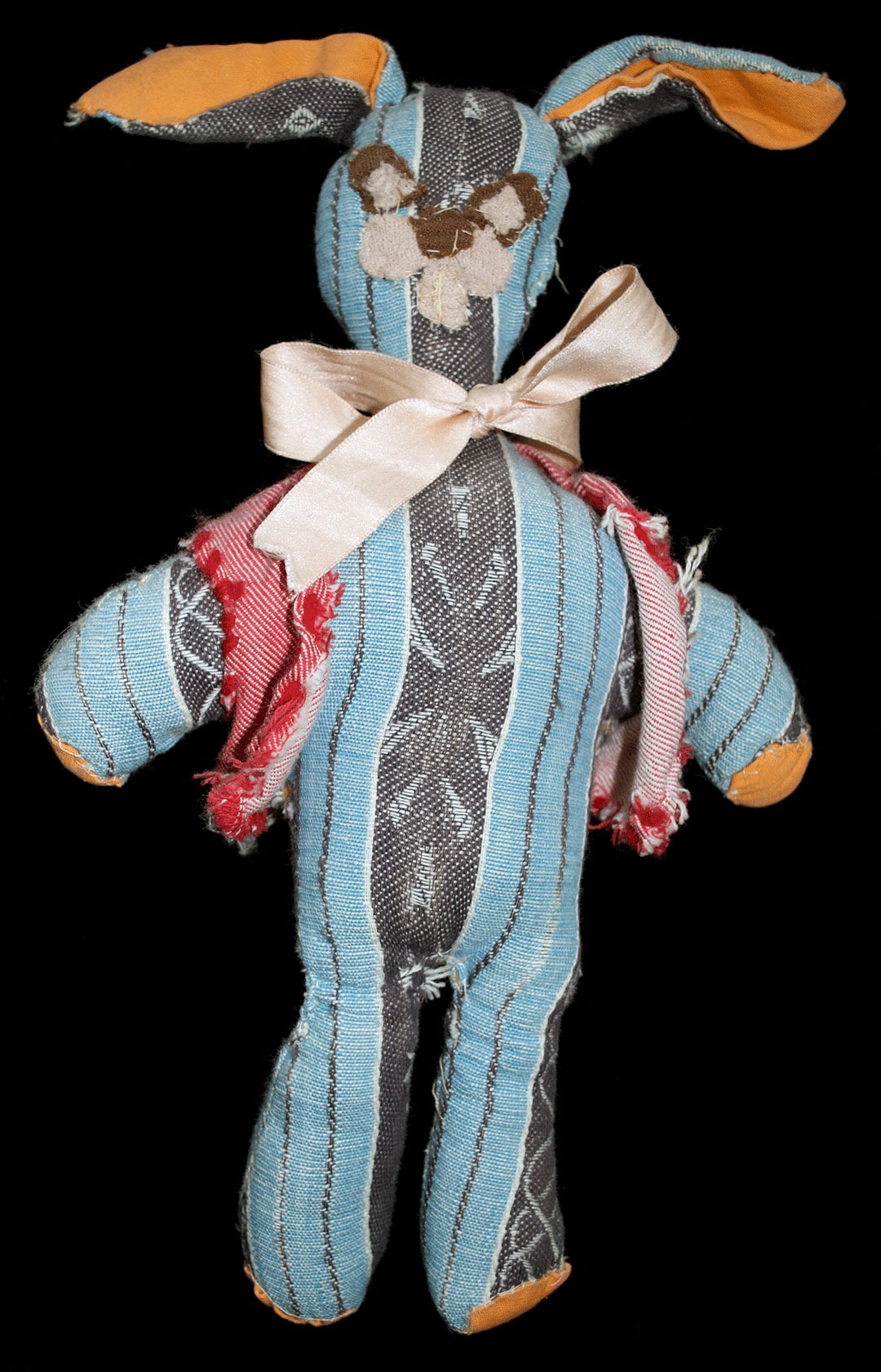
More recently I have stitched and beaded Beasties of varying sizes; they are made with repurposed cloth and stuffed with old clothing. These inhabit our living room and insist on taking up most of the chairs!
In 2016, inspired by the sigils in Game of Thrones (inscribed symbols considered to have magical powers) and by Tibetan Tankas (Buddhist paintings on cotton, silk appliqué, usually depicting a Buddhist deity), I hand stitched and beaded my own Sigil for The House of Mullov Nna. The Beastie is cut from felt and stitched onto the background panel.
Another piece Serendipity consists of two panels of painted fabric. One is cut with a lace-like design which is then used to stencil images on the second piece. Both these pieces are embellished with beading and hand stitched needle felted balls.
Prior to stitching, I worked in oil paint in a more traditional style, moved to abstracts in acrylic and oil bar, then started drawing Beasties in black ink. Early drawings can be seen at BeastlyBeasties.com.
Drawing on painted backgrounds followed, creating handmade and illustrated books containing Beasties. Then the books became less traditional and I moved to cutting Tyvek and eventually fabric and Sue Stone’s online course!
My aunt was excited to see the pieces I made during my time as a student on Exploring Texture & Pattern and thought my grandmother, who was always knitting and encouraged me to make things, would have loved them.
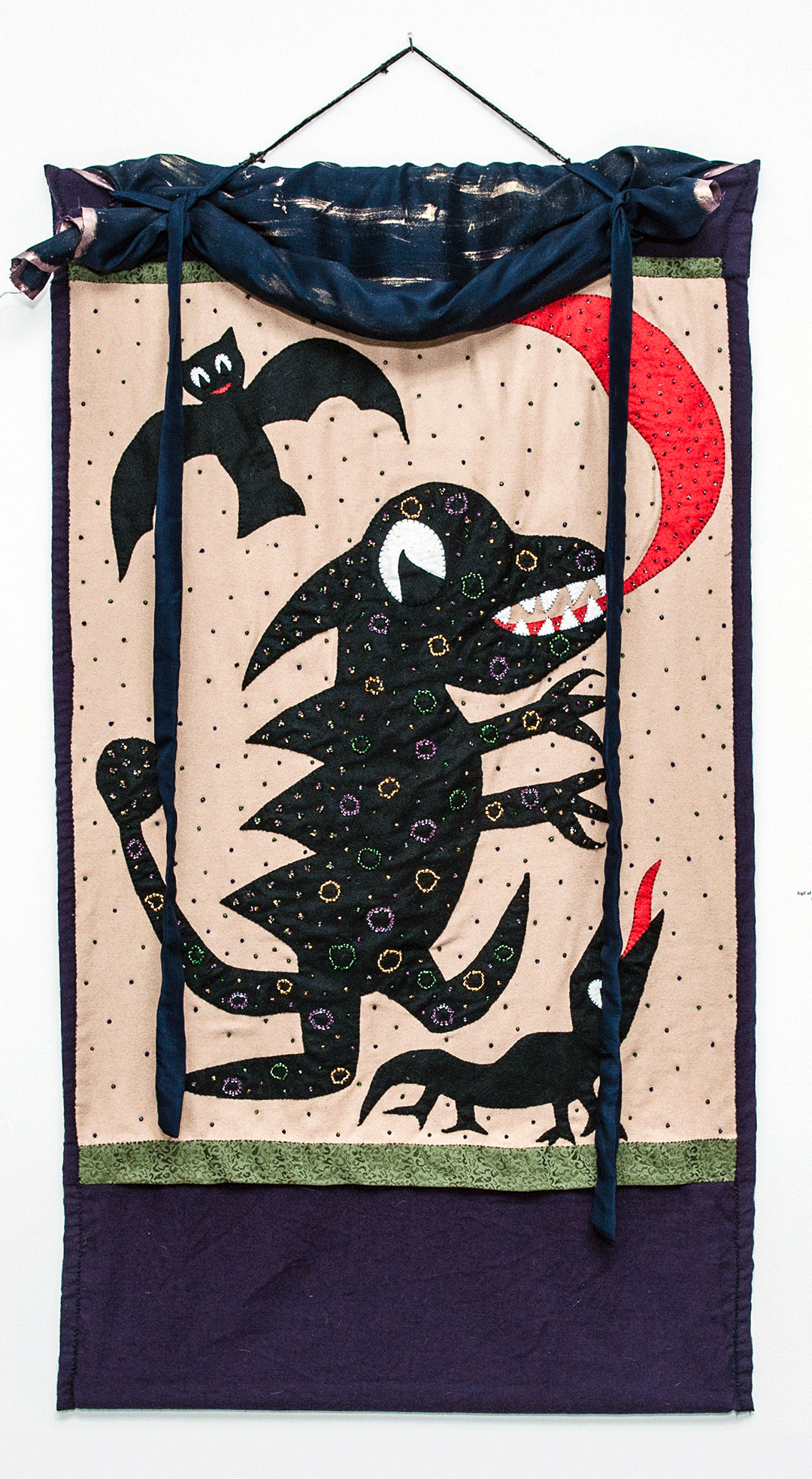
Tell us a bit about your personal journey and why you decided to take the Exploring Texture & Pattern course.
One of my daughters was into embroidery for a while – I could not imagine having the patience for it but here I am! I was inspired me to do an embroidered piece on a heavy piece of canvas I had lying around… very hard on the fingers! After doing this piece, I was entranced with the possibilities of introducing hand stitching into my work, more so as I found it to be therapeutic and contemplative.
I like that I can take my stitching with me, that I can work in short spurts if needed and that I can combine all of my expertise into a stitched piece.
I was interested in textiles from an early age and had wanted to study textile design, but was steered in to architecture and graphic design.
I had the misfortune of attending a very snooty girls public (private) school in England, where if you were artistic, unless you were a C or D student, you were not allowed to go to art college, but were forced to study to be an architect as that was considered to be much more respectable.
Unfortunately, at the time I was not rebel enough to disobey as those in charge were pretty fearsome and we had had it drilled into us that one must conform.
My parents were also terrified that with an art degree I would never be able to support myself and besides my mother always called art “a sloppy op”!
I was unsuited to architecture, so after getting my BA, I did a year at The London College of Printing – textile courses took too many years and were too expensive. I ended up learning to be a graphic designer on the job.
Whilst doing research into embroidery techniques for my piece Motherlode I came across Sue’s work and TextileArtist.org, watched the free introductory video series and was very impressed.
I liked that Sue combines paint with stitching and that her stitching is wonky and expressive!
When the Exploring Texture & Pattern with Sue Stone online course became available, I knew that I wanted to register. I felt that is was finally time, especially as there was a year to complete it and the structure allowed for a lot of flexibility. I have not regretted it for a minute; it has been the most wonderful and enriching investment!
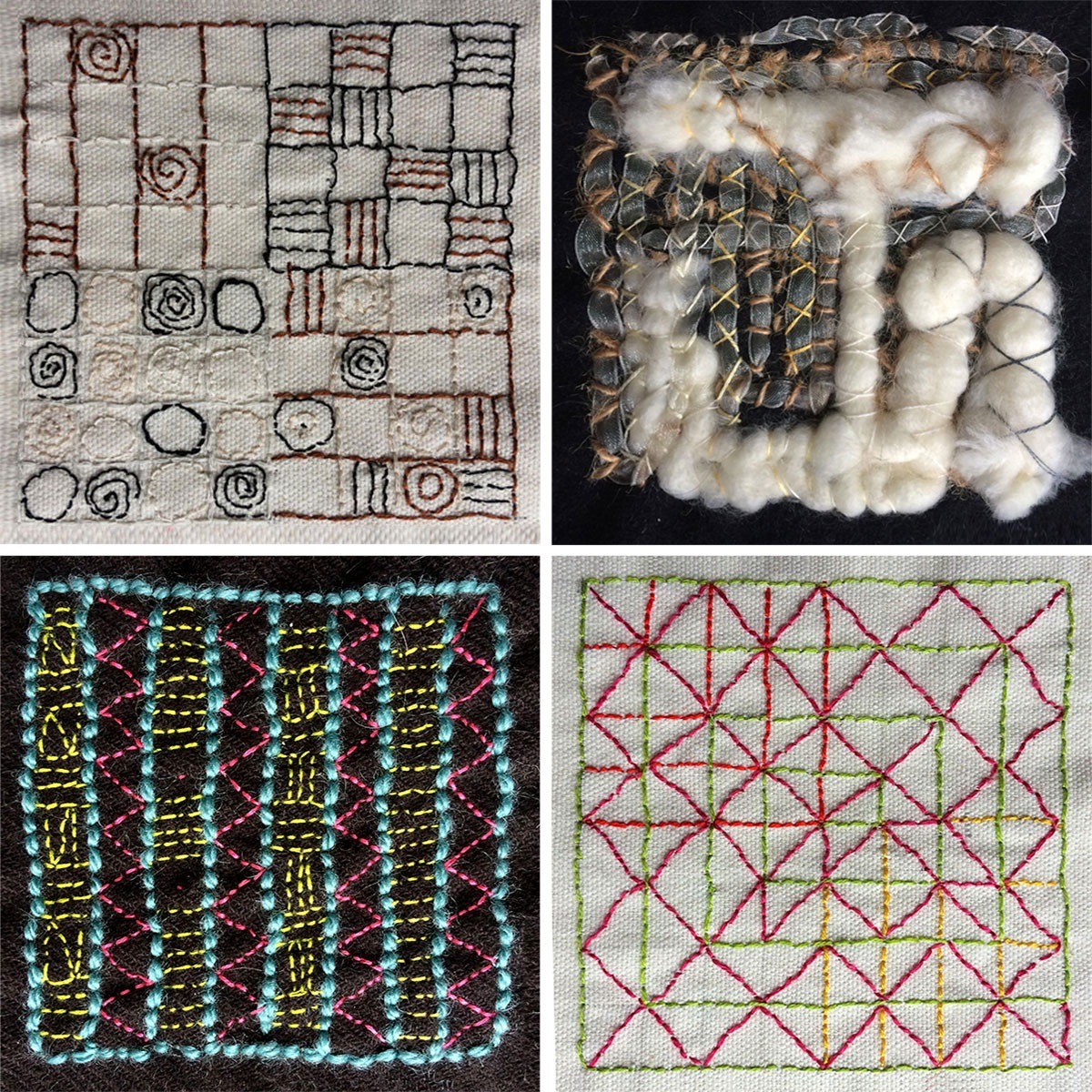

Finding freedom in stitching
What were your
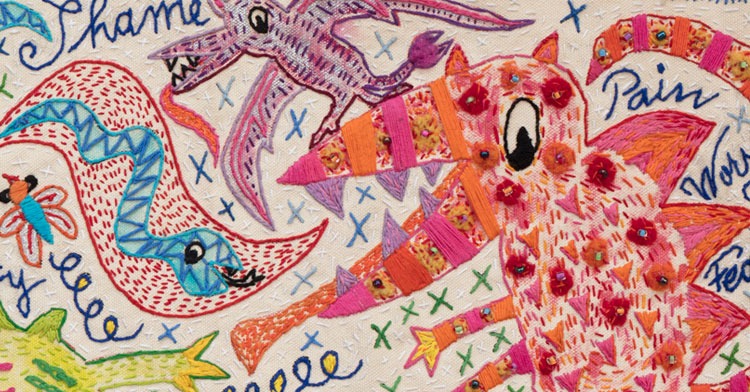

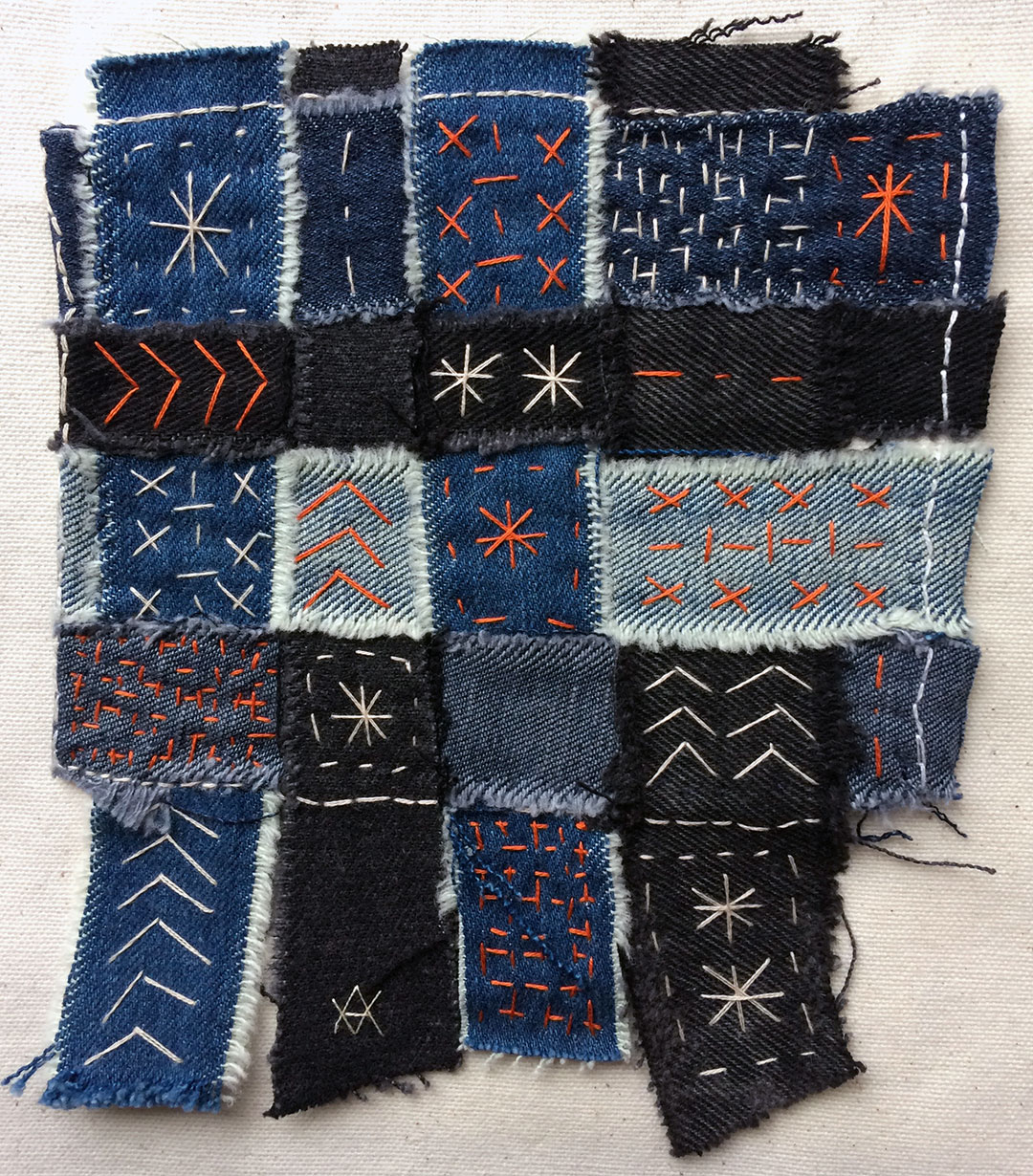
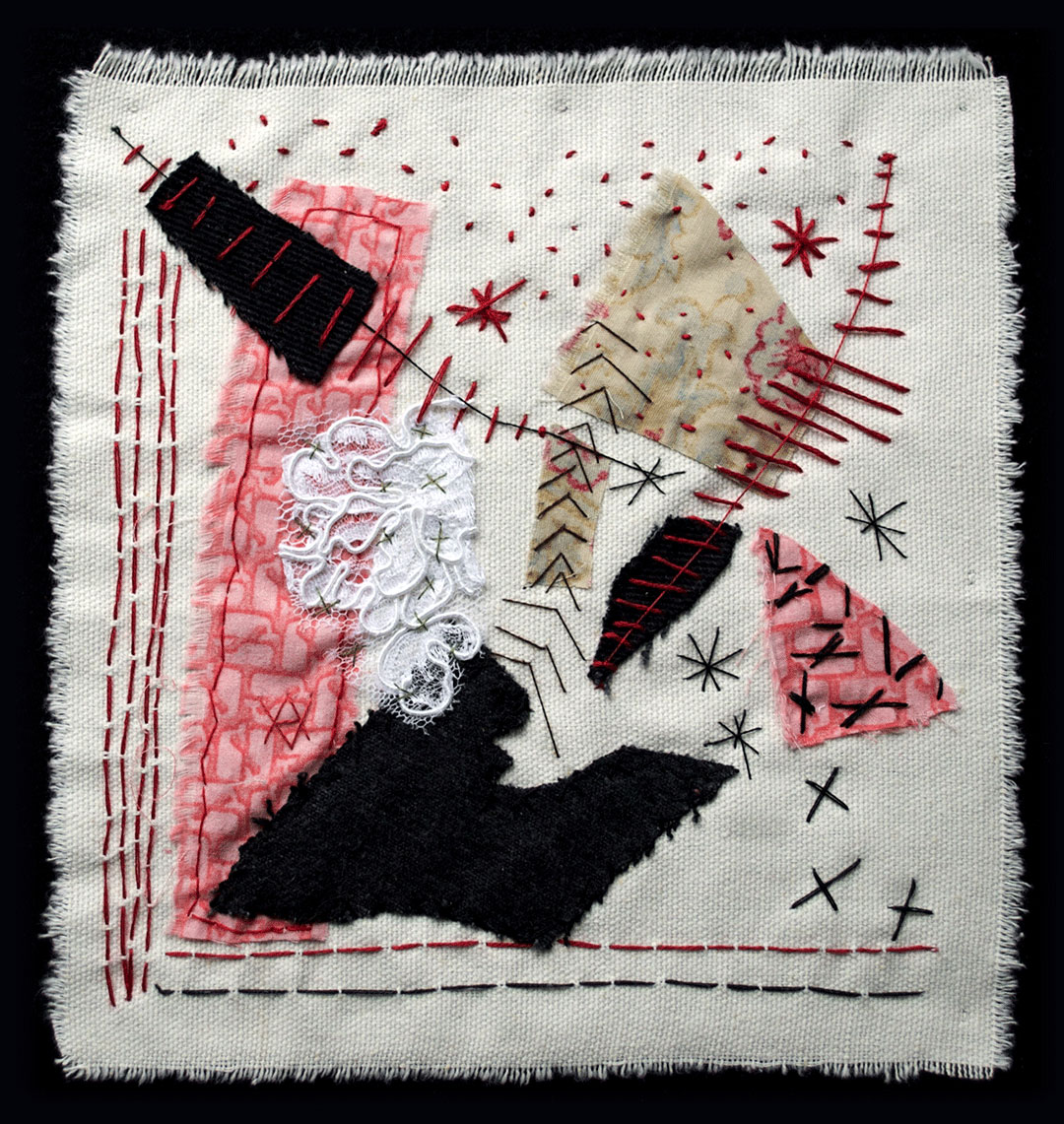
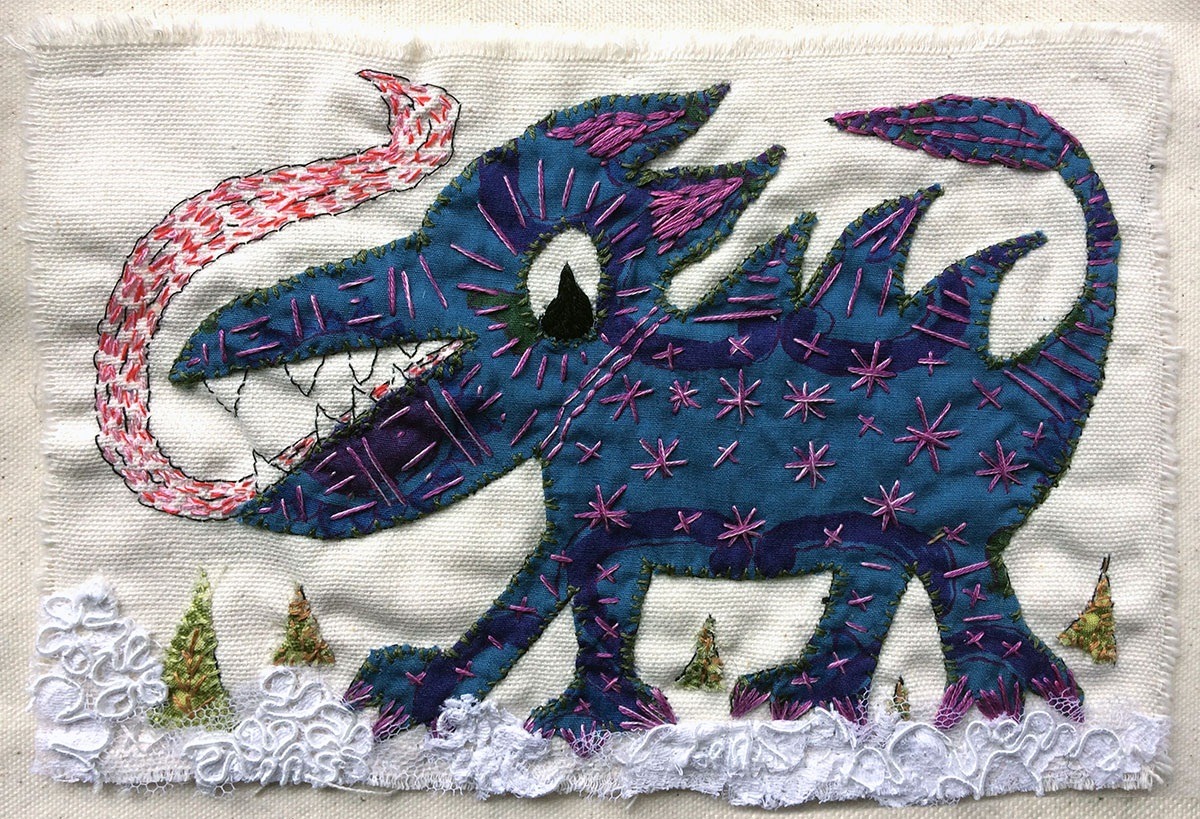

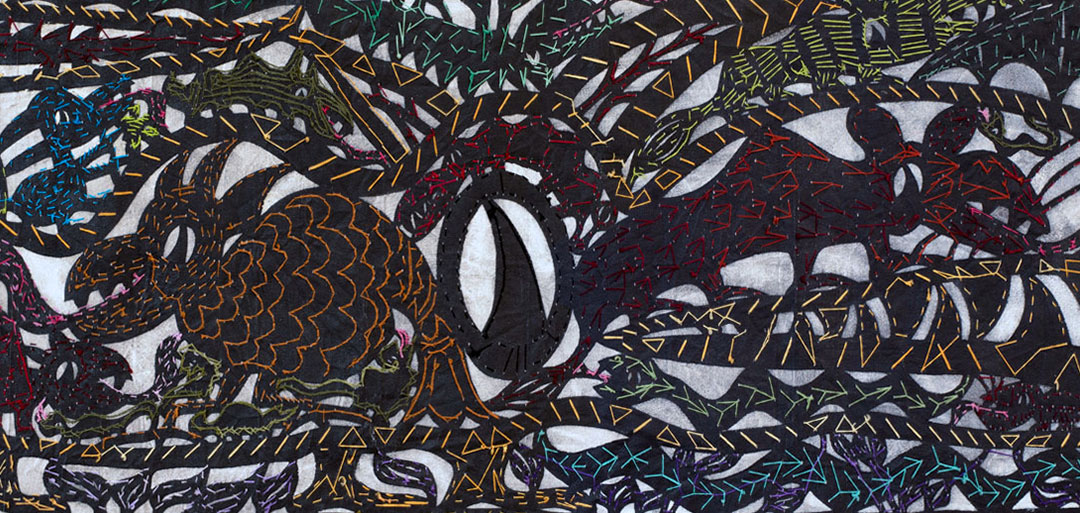
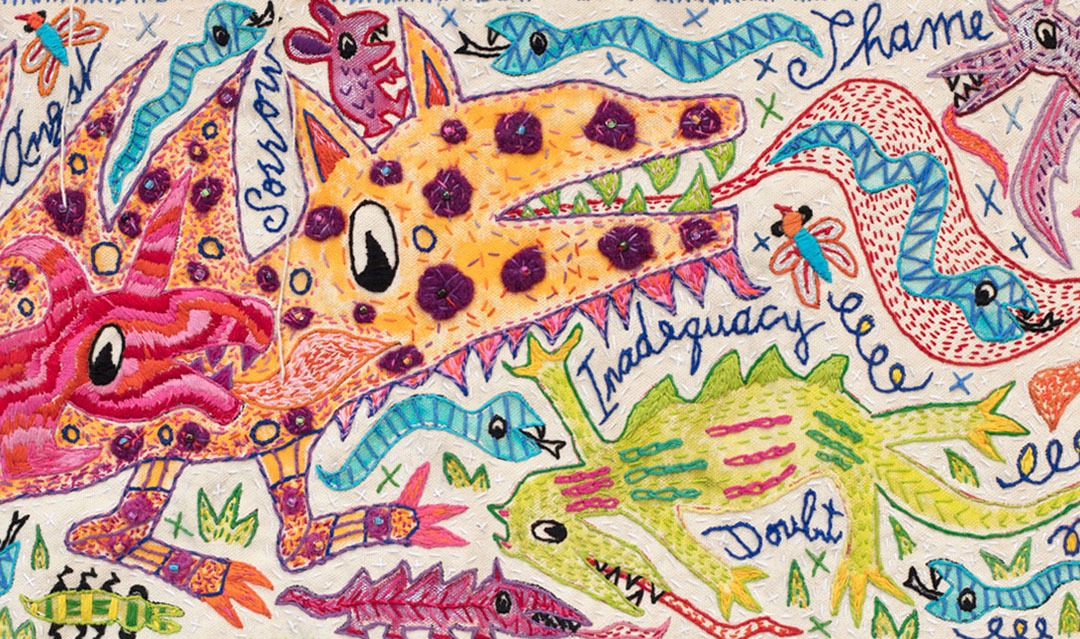
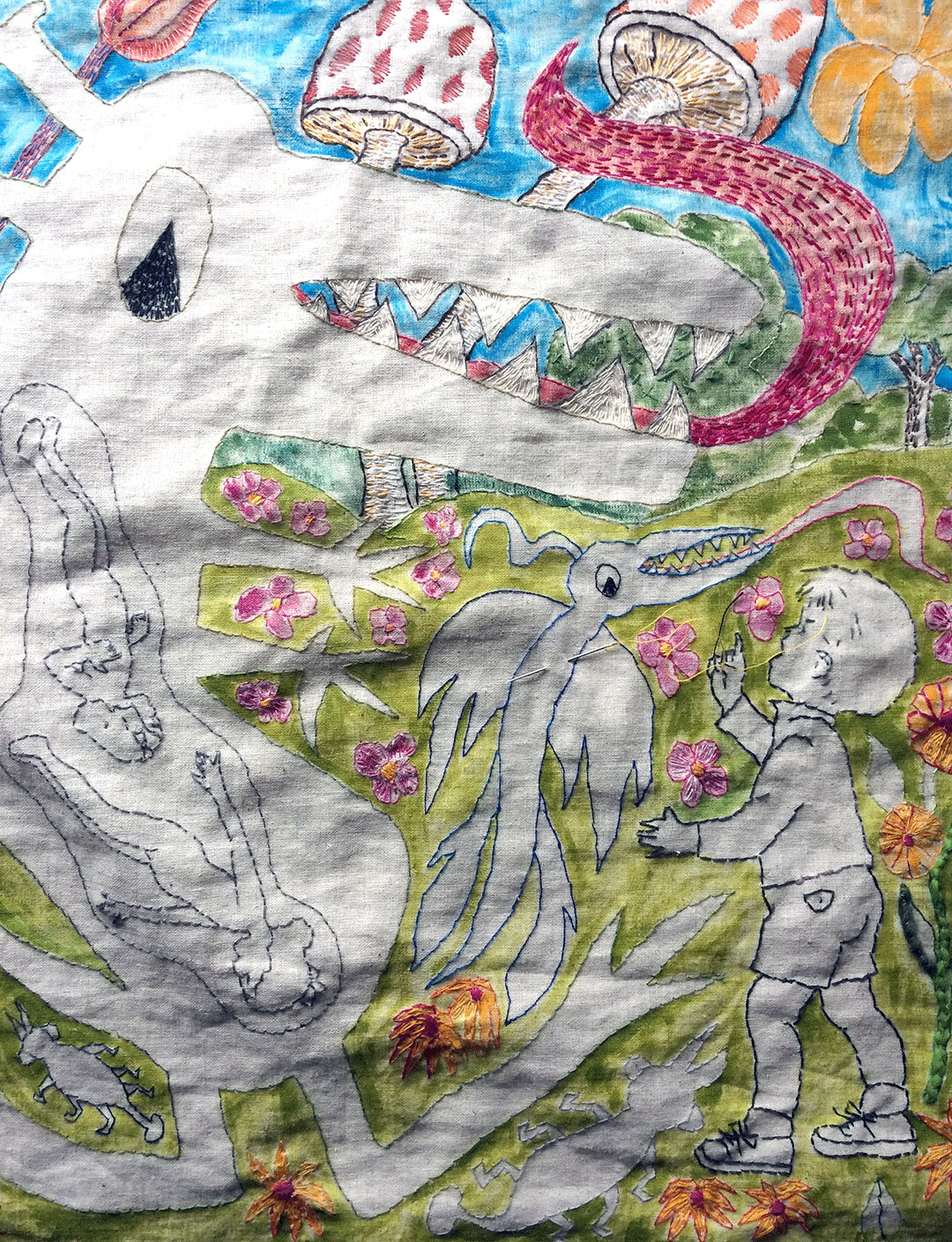
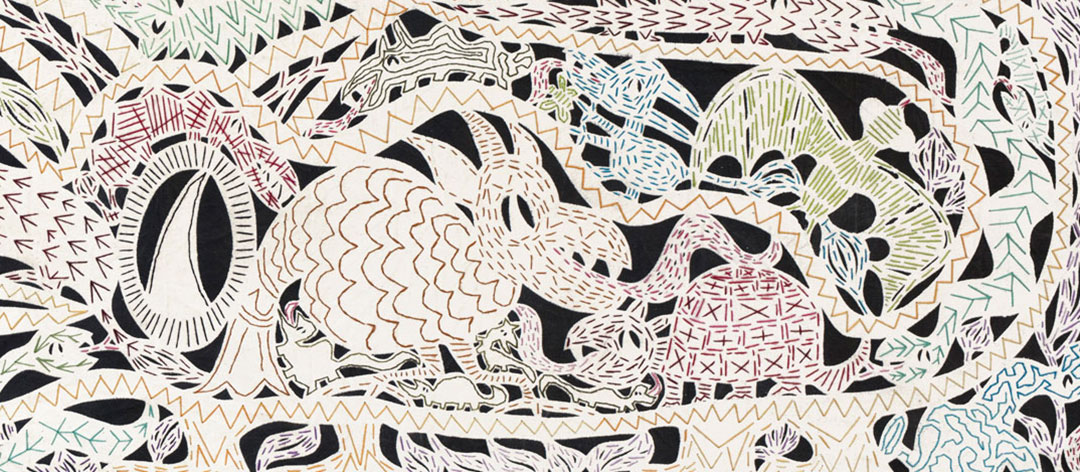
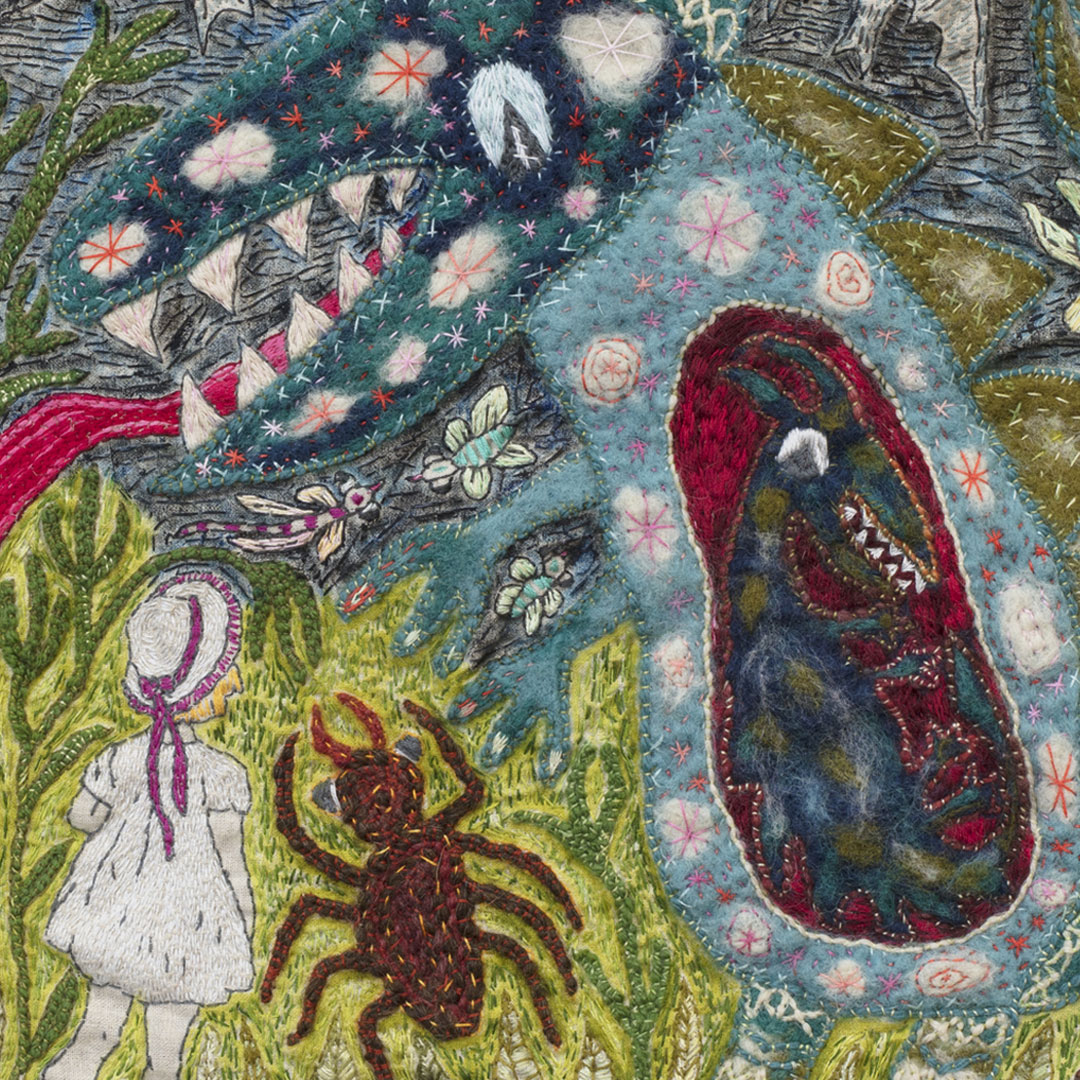


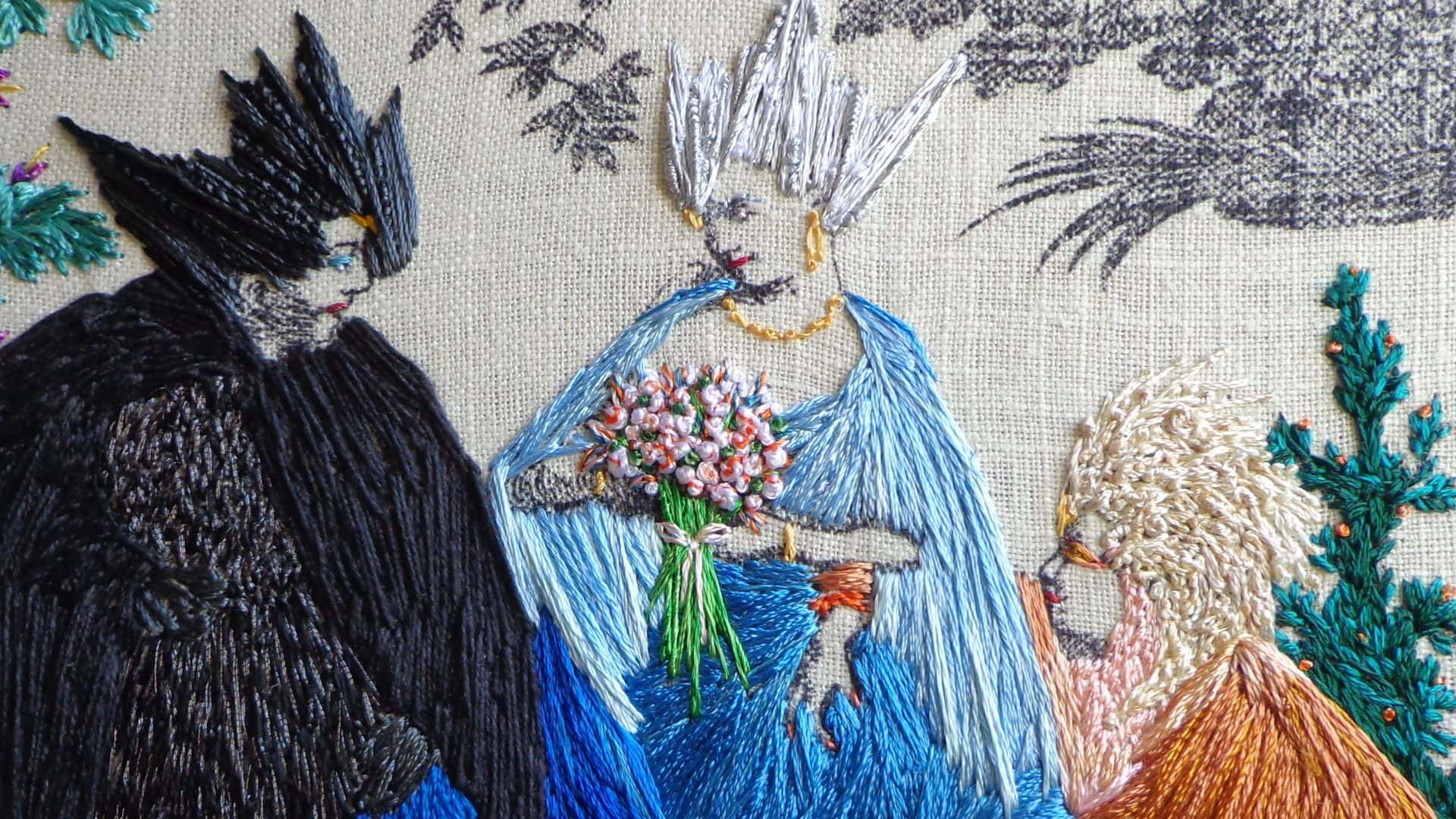
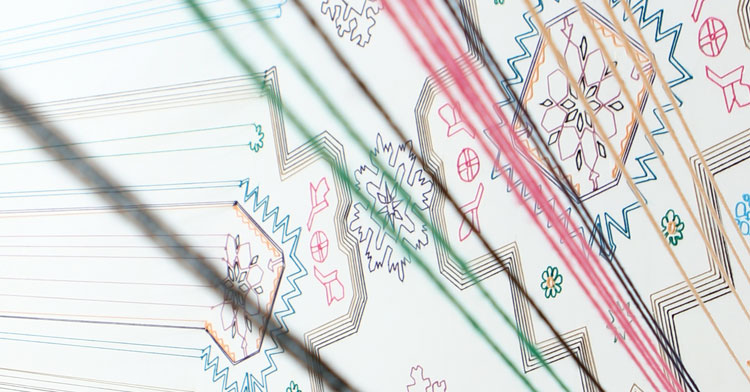
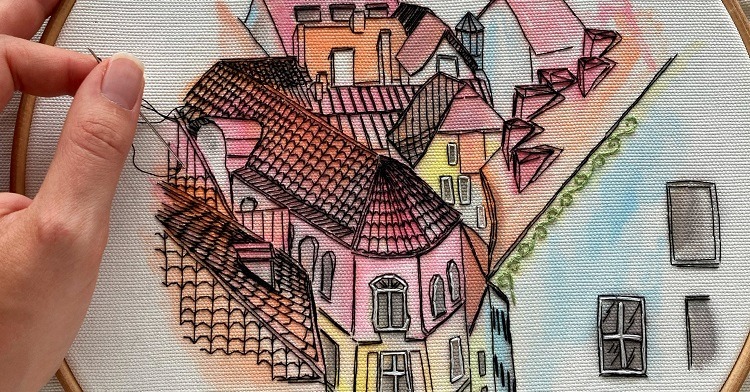
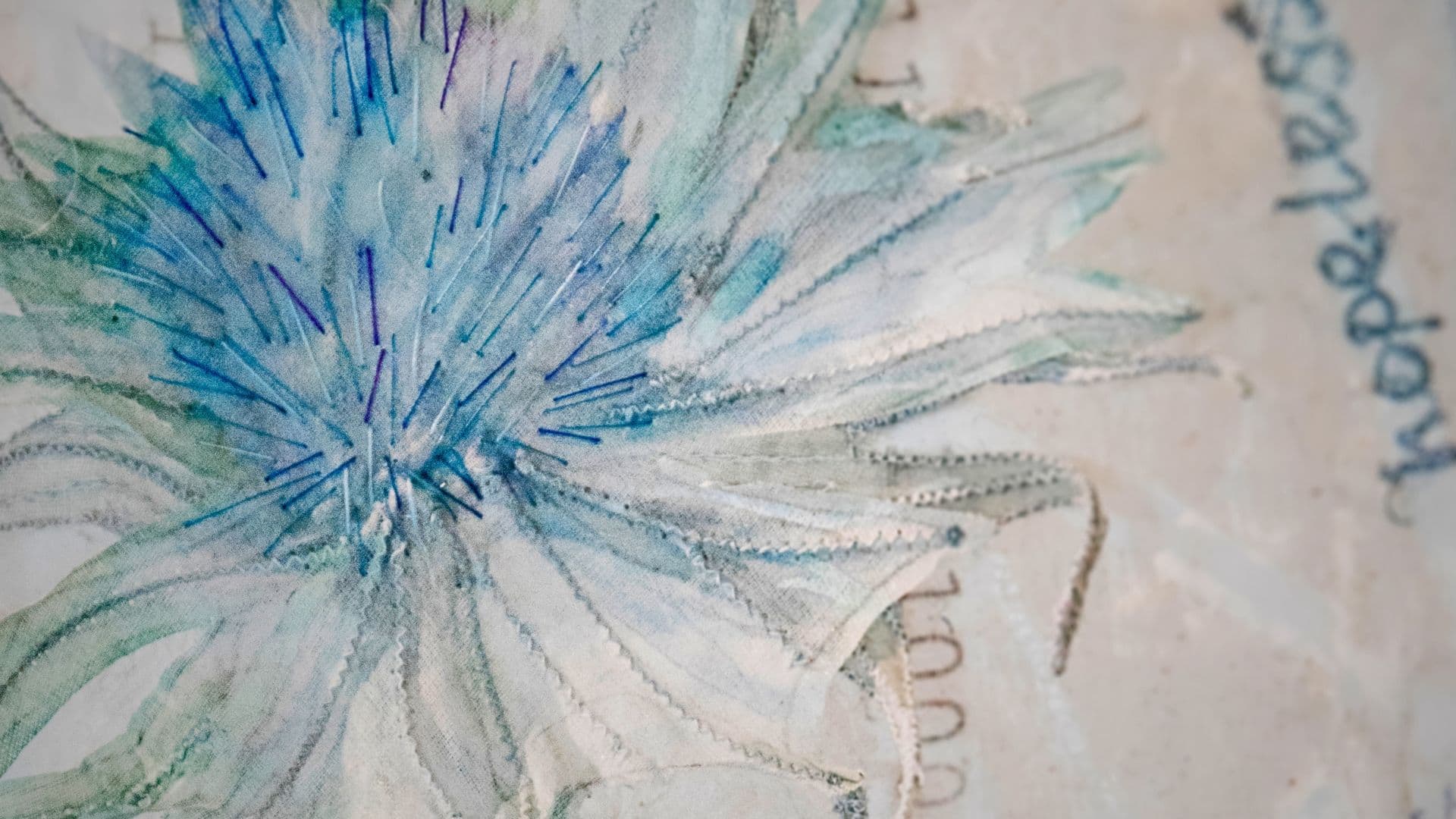
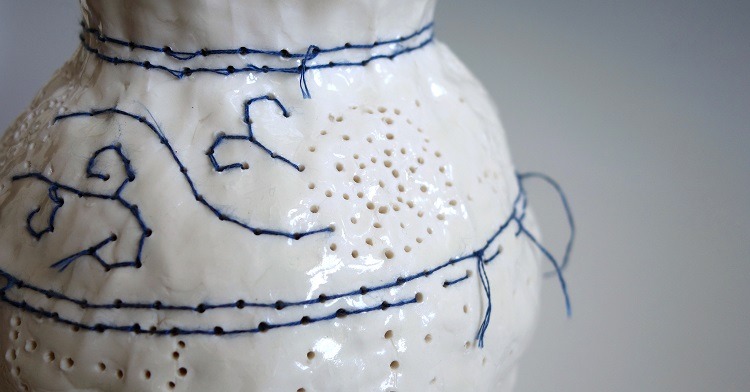
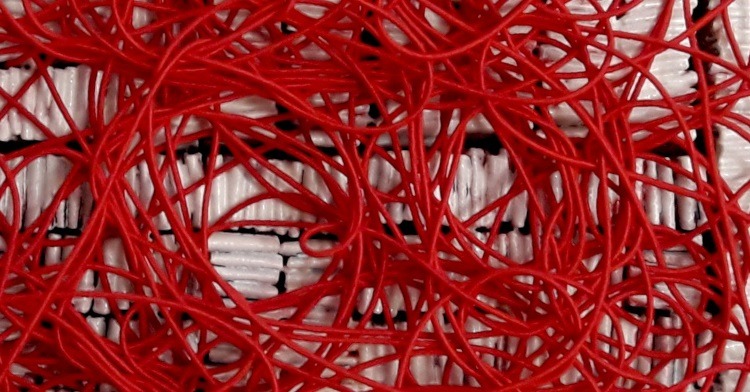
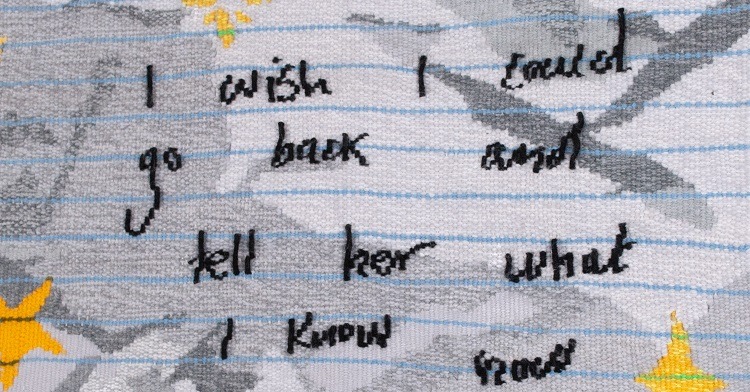
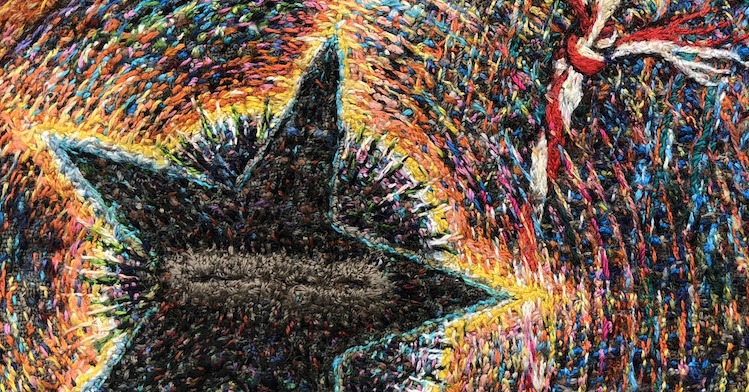
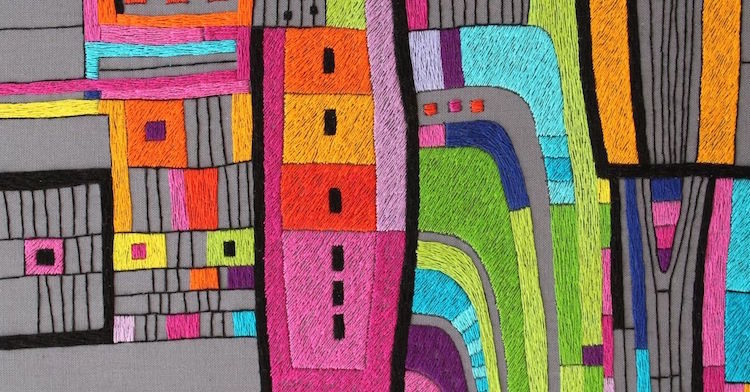
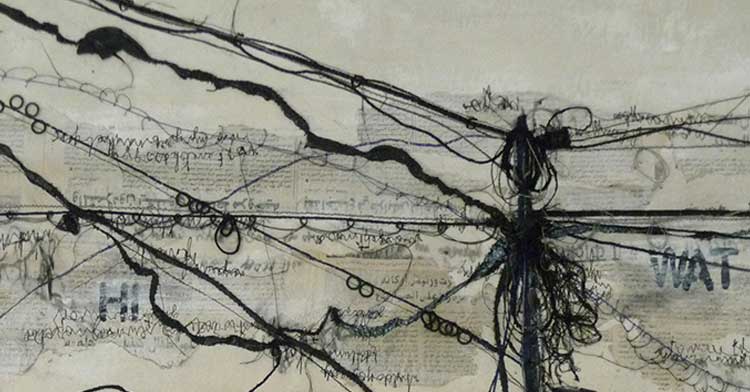
18 comments
Theresa Evans
Yes, me too. It would be good to know if it’s going to be offered again? Thanks.
charlotte
Thank you for your comment, Keep an eye out in our upcoming newsletters, we have some exciting news coming regarding new training and course opportunities. All the best, Charlotte
Carla Paterson
I’m also wondering if the course will be offered in 2020.
Aprille Janes
Will the course be offered again in 2020?
Sandie Hutchins
Hi, can you tell me if the course is still available and if so how I might sign up?
Joe
Hi Sandie – it will open for registration again in January. Are you on our mailing list?
Tabitha Klucking
I’m curious about the online classes, but couldn’t find anything other than the e-books on the website. Could you point me to some more info? Thanks!
Joe
Hi Tabitha – are you on our mailing list? We’ll be sending out more info very soon.
Sandie
Really interesting and inspiring! I wonder, is the course still available and if so where would I go to find out more?
Imelda Connolly
Wonderfully detailed and imaginative work Ann! Your work was so amazing before you did the course but it is great that you are now adding another dimension to your work by adding stitches. I’m sure you will develop your use of stitches in amazing directions in your future work. Well done Ann!
Ann Vollum
Thank you Marilyn, I’m looking forward to following each other’s artistic journey in the alumni group. I have so enjoyed seeing your beautiful work develop.
Marilyn Theisel
I am so pleased to read Ann’s story. As a participant of the texturetextile group, I enjoyed the feedback given between the students. Ann’s work is always an inspiration and I loved following what she produced. We will meet up again in the Alumni group and once more share ideas and further our passion for creativity. All the best to Ann and her explorations in imagination and being able to share with the world.
Ann Vollum
Thank you Marilyn, I’m looking forward to following each other’s artistic journey in the alumni group. I have so enjoyed seeing your beautiful work develop.
Linda Atherton
I was 5-years old when I got my first embroidery hoop. I spent many happy hours stitching a variety of projects, then promptly forgot all about it when I became a teenager. In my 20s, my needlework passion surfaced again for a couple of years when I took up needlepoint and cross stitch. Then it went underground again until, at 40, I went to art school for a BFA in painting. During my second year there, while working on a 3-D design project, I decided to incorporate a little embroidery into the piece. Picking up needle and thread again reminded me just how much I loved to stitch.
After graduating I dropped stitching yet again in favor of trying to make myself into a painter. After all, I had just spent a lot of money on that painting degree. When, a couple of years later, it dawned on me that I’m really not a painter, I quit that until I was in my late 50s and got the sudden urge to make art quilts. I made a few small hand-stitched pieces that incorporated drawing, painting, beading, and embroidery. 15 years later, I’m still at it and loving every minute of it. It took me a very long time to find it, but I’ve finally found my own unique creative niche. I’m finally home!
Gaylyn Kaufman
Oh so inspiring!
Gwen Simpson
I love this work, in particular the black and white. So inspiring. I am thinking of doing the online course and wonder if I can combine it with the 100 day challenge I have signed up for ?
Ann Vollum
Thank you! Good luck with the 100 day challenge. Some years ago I challenged myself to do a drawing a day and to post it on my BeastlyBeasties.com Tunbler blog. I did this for a number of years and then progressed to posting progress on drawings. I think the 100 day challenge most likely would combine well with the course. If not you could start it after the challenge has been done. Good luck with it and I encourage you to take the course!
Joe
Hi Gwen – I’m not familiar with the 100 day challenge. Send a link to joe@textileartist.org and I’ll take a look so I can advise you whether it would work alongside the Exploring Texture & Pattern course. All the best, Joe